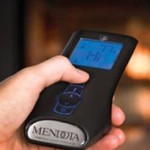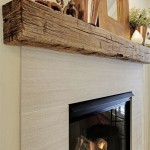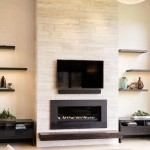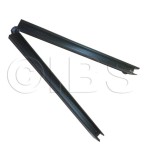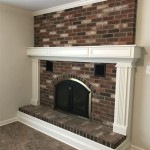Energy Efficient Electric Fireplace Stoves: Warmth Without Waste
Electric fireplace stoves offer a compelling alternative to traditional wood-burning stoves and gas fireplaces, providing supplemental heating and aesthetic appeal with enhanced energy efficiency. These appliances mimic the look and feel of a classic stove while leveraging electric power to generate heat. Understanding the efficiency aspects of these stoves is crucial for homeowners seeking a cost-effective and environmentally conscious heating solution.
Unlike their traditional counterparts, electric fireplace stoves do not require venting, eliminating heat loss through a chimney or flue. This enclosed system contributes significantly to their overall efficiency. The heat generated is directly emitted into the room, minimizing wasted energy. Furthermore, many models come equipped with advanced features designed to optimize energy consumption.
Heating Capability and Energy Consumption
The heating capacity of an electric fireplace stove is typically measured in British Thermal Units (BTUs) or watts. A common range for these stoves is between 4,000 to 5,000 BTUs, or approximately 1200 to 1500 watts. This output is generally sufficient to heat a room of around 400 to 1,000 square feet, depending on insulation and ambient temperature. While the wattage indicates the instantaneous power draw, the actual energy consumption depends on how frequently and at what setting the stove is used.
To calculate the cost of running an electric fireplace stove, one needs to consider the wattage, the duration of operation, and the local electricity rate. For instance, a 1500-watt stove operating for one hour will consume 1.5 kilowatt-hours (kWh) of electricity. If the electricity rate is $0.15 per kWh, the cost to operate the stove for that hour would be $0.225. Optimizing usage habits can significantly impact the overall cost. Lower temperature settings and shorter operating times directly translate to reduced energy consumption.
Key Features Contributing to Energy Efficiency
Several features contribute to the energy efficiency of electric fireplace stoves. These features are not universally available, so prospective buyers should evaluate which options align with their needs and contribute to energy savings.
Adjustable Thermostats: Most electric fireplace stoves are equipped with adjustable thermostats, allowing users to precisely control the desired room temperature. This prevents overheating and eliminates the need to manually switch the stove on and off, reducing energy waste. By setting the thermostat to a comfortable but not excessive temperature, homeowners can maintain warmth while minimizing power consumption.
Timer Functions: Timer functions enable users to pre-set the operating duration of the stove. This is particularly useful for heating a room before arriving home or for providing warmth during specific periods. By automatically shutting off after a pre-determined time, the timer prevents the stove from running unnecessarily, conserving energy.
Zone Heating Capability: Electric fireplace stoves are ideal for zone heating, which involves heating only the occupied areas of a home rather than the entire space. This approach is significantly more efficient than relying on a central heating system to heat rarely used rooms. By concentrating the heat in a specific zone, electric fireplace stoves reduce overall energy consumption and associated heating costs.
LED Flame Effects: Modern electric fireplace stoves utilize LED technology to create realistic flame effects. LEDs are exceptionally energy-efficient, consuming a fraction of the power compared to traditional incandescent bulbs. The flame effect can often be operated independently of the heating function, allowing users to enjoy the ambiance of a fireplace without generating heat during warmer months, further enhancing energy conservation.
Comparison with Other Heating Options
Compared to traditional wood-burning stoves, electric fireplace stoves offer superior energy efficiency due to the absence of heat loss through a chimney. While wood-burning stoves provide a distinct aesthetic and authentic experience, they require significant effort in sourcing, storing, and loading wood. A substantial amount of heat is also lost up the chimney, diminishing the overall efficiency. Electric stoves eliminate these drawbacks, offering a convenient and energy-efficient alternative.
Compared to electric baseboard heaters, electric fireplace stoves often provide a more aesthetically pleasing and targeted heating solution. Baseboard heaters tend to heat entire walls, which may not be necessary in all situations. Electric fireplace stoves offer a more focused heat output, allowing users to direct the warmth towards specific areas. The visual appeal of a fireplace stove also enhances the ambiance of a room, distinguishing it from the purely functional nature of baseboard heaters.
Considerations for Optimal Energy Efficiency
To maximize the energy efficiency of an electric fireplace stove, several factors should be considered. Proper insulation of the room is paramount. Insulated walls, windows, and doors minimize heat loss and reduce the demand on the stove. Sealing air leaks around windows and doors further prevents drafts and ensures that the generated heat is retained within the room.
The placement of the stove also influences its efficiency. Positioning the stove in a central location within the room allows for better heat distribution. Avoid placing the stove in areas with significant drafts or near cold surfaces, as this can reduce its heating effectiveness. Experimenting with placement can help identify the optimal location for uniform heat distribution.
Regular maintenance is also important. Keeping the heating elements and air vents clean ensures optimal performance and prevents reduced efficiency due to dust accumulation. Following the manufacturer's recommendations for cleaning and maintenance prolongs the lifespan of the stove and ensures it operates at peak efficiency.
Safety Features and Considerations
Electric fireplace stoves incorporate several safety features to enhance user protection. Overheat protection is a standard feature that automatically shuts off the stove if it reaches an unsafe temperature, preventing potential fire hazards. Cool-touch housings minimize the risk of burns, especially for households with children or pets. These safety features contribute to the overall appeal of electric fireplace stoves as a safe and convenient heating option.

Are Electric Fireplaces Energy Efficient We Love Fire

Are Electric Fireplaces Energy Efficient We Love Fire

Energy Saving Small Good Quality Decorative Electric Fireplace China Heater Made In Com

Energy Efficiency Benefits Of Purchasing An Electric Fireplace Uintah Fireplaces

Compact 18 Inch 3d Infrared Electric Stove With Remote Antique Black Freestanding Fireplace Safe Energy Efficient Realistic Flame Effects Overheat Protection Adjustable Settings Com

Your Guide To Selecting An Energy Efficient Electric Fireplace Dreifuss Fireplaces

Electric Fireplace Stove 23 Inches Freestanding Infrared He Grillpartsreplacement Bbq Parts Retailer

Lifeplus Small Electric Fireplace Heater Tabletop 13 5 Energy Efficient Indoor Space Portable Wood Cabinet 3d Flame For Home Decor Com

Homcom 30 1400w Freestanding Energy Efficient Electric Fireplace Heater With Mantel Beige Aosom

Comfort Glow Electric Quartz Mobile Fireplace Indoor Heater With 3 Energy Efficient Heating Elements White Target
Related Posts

